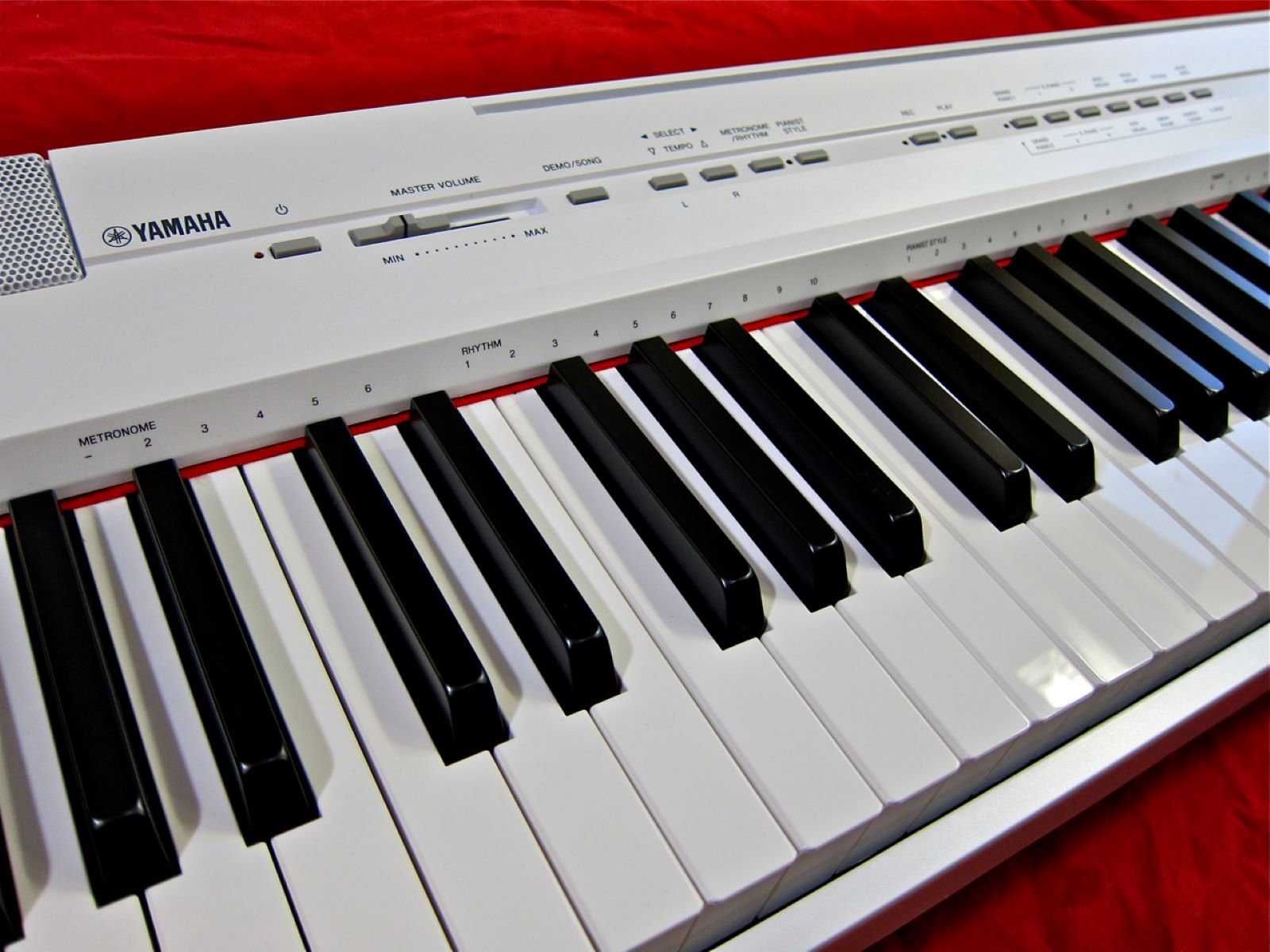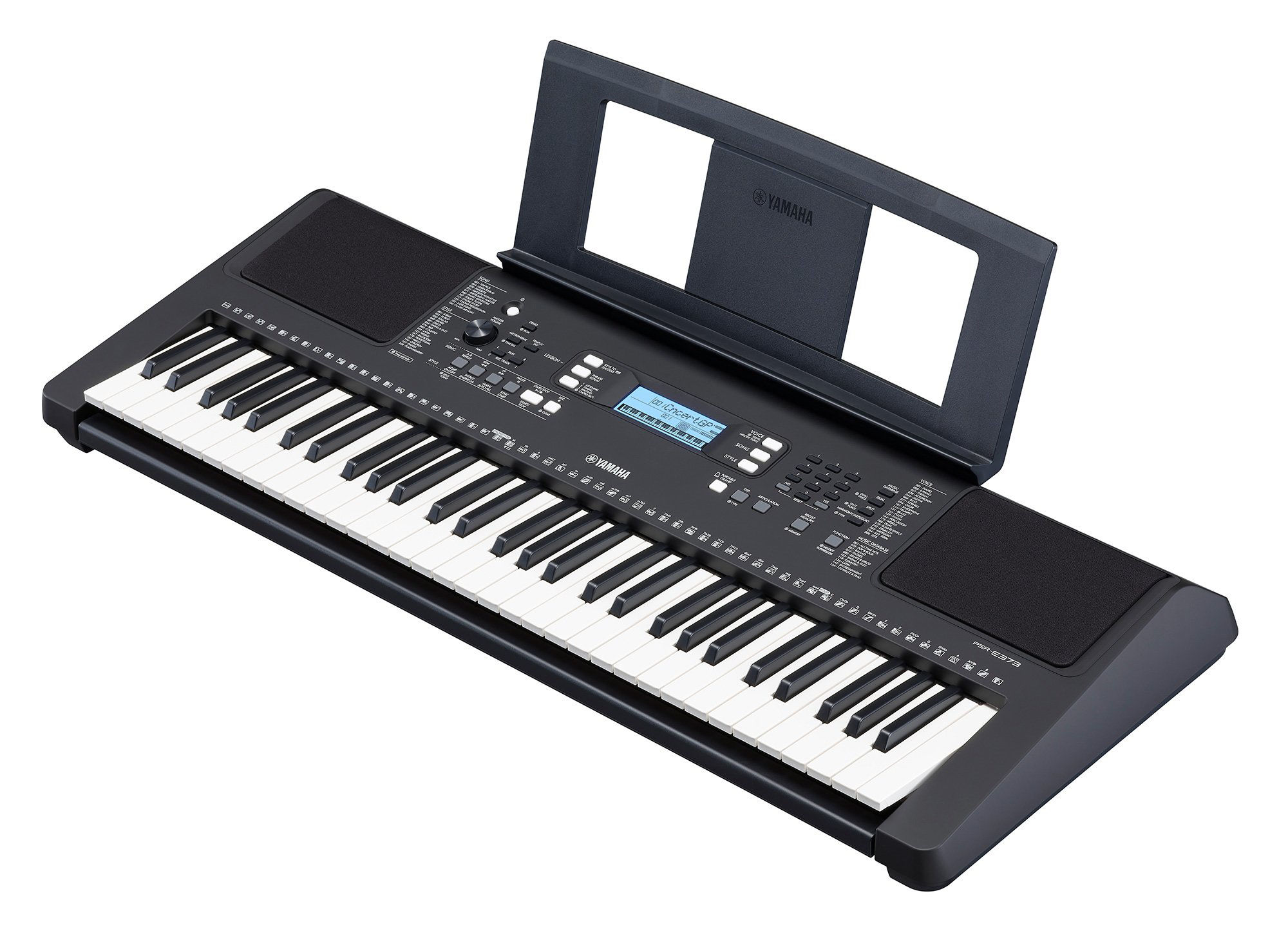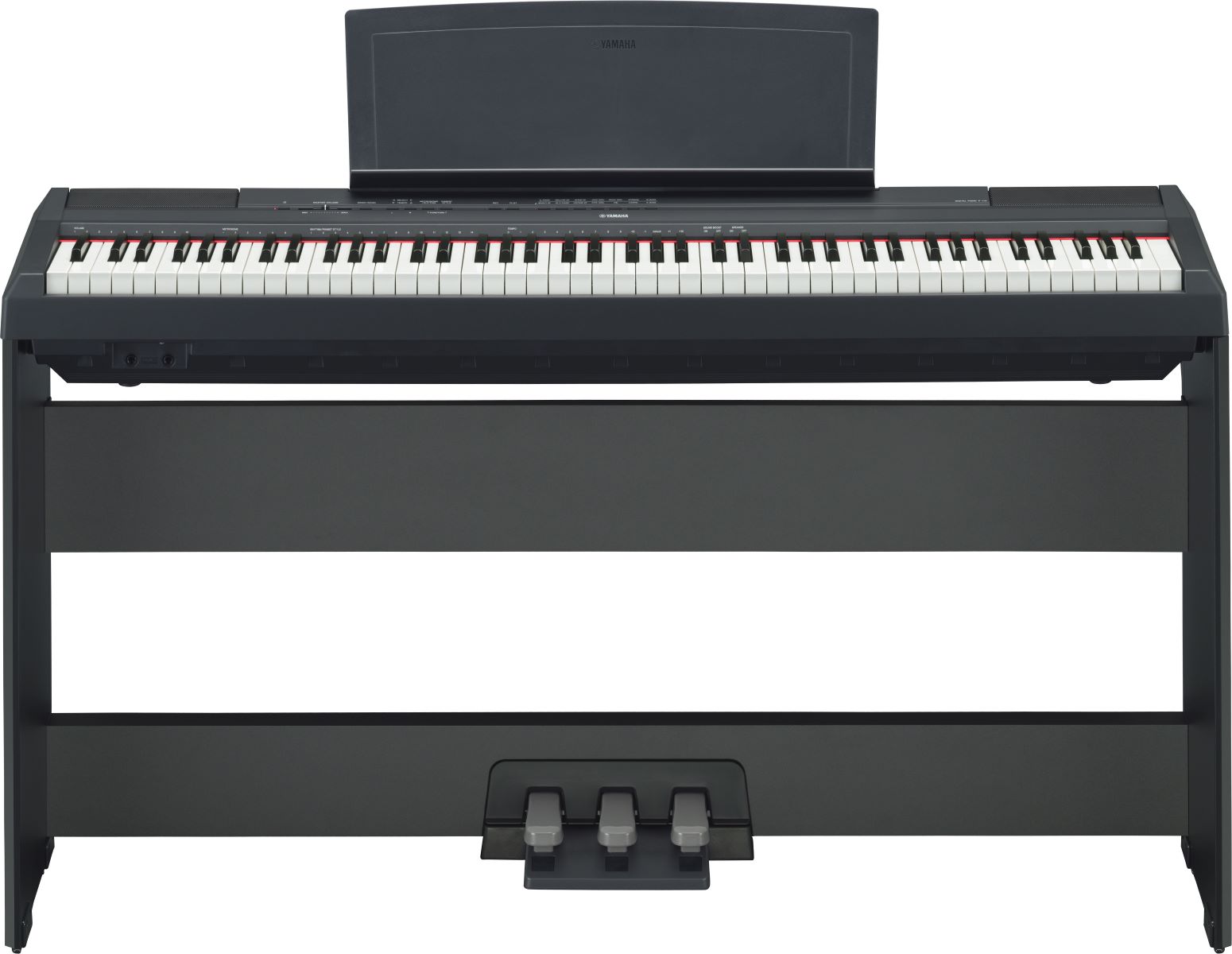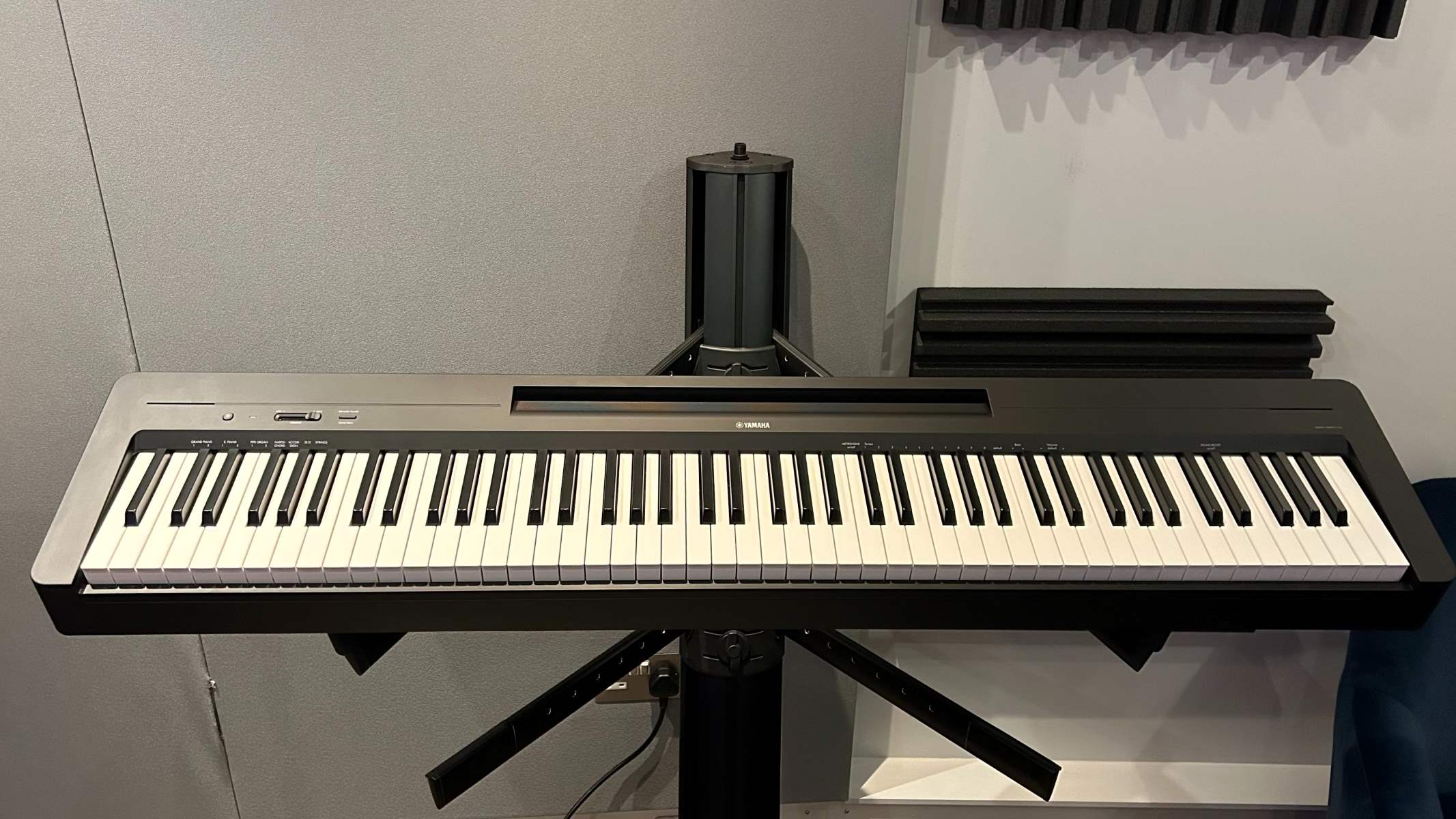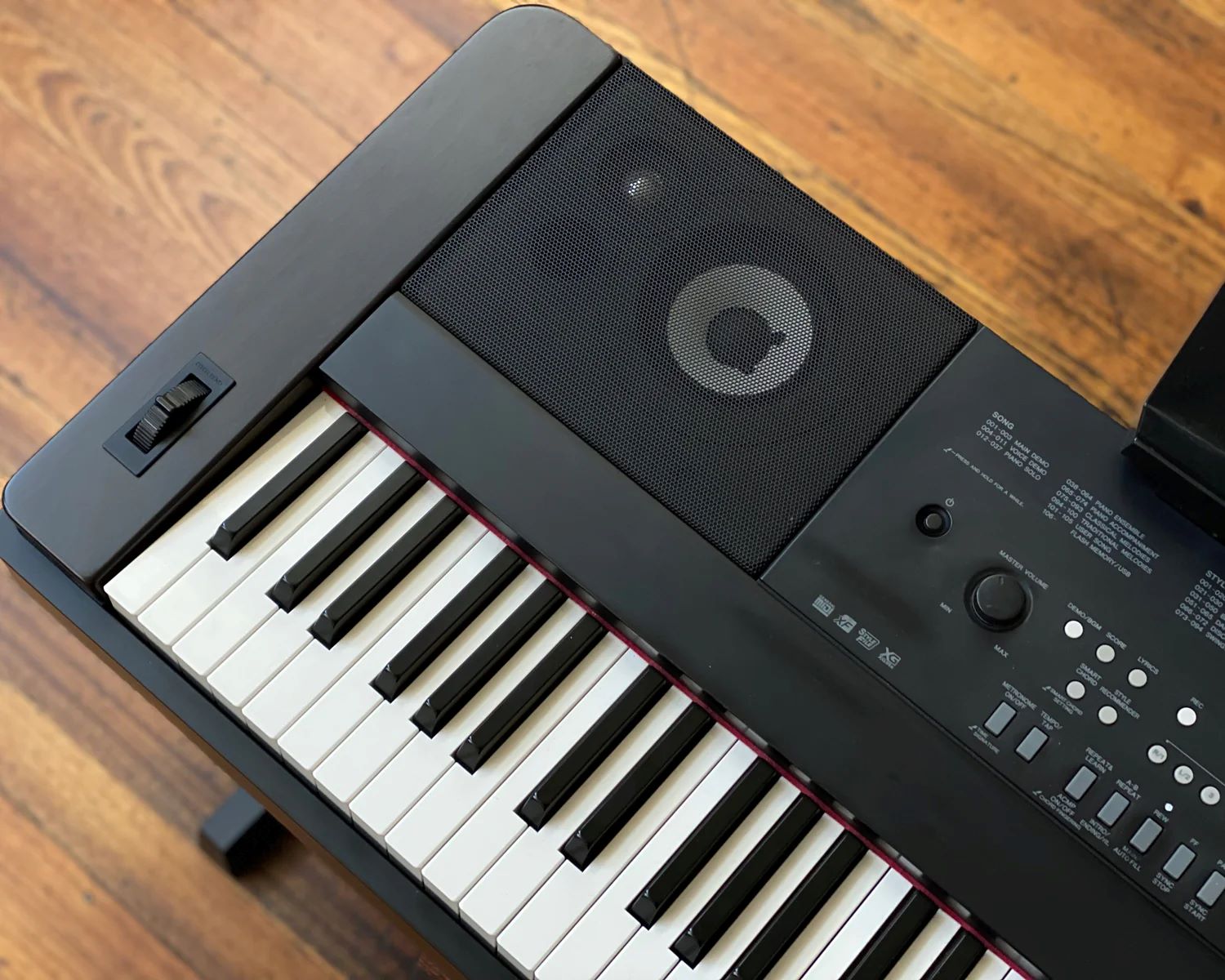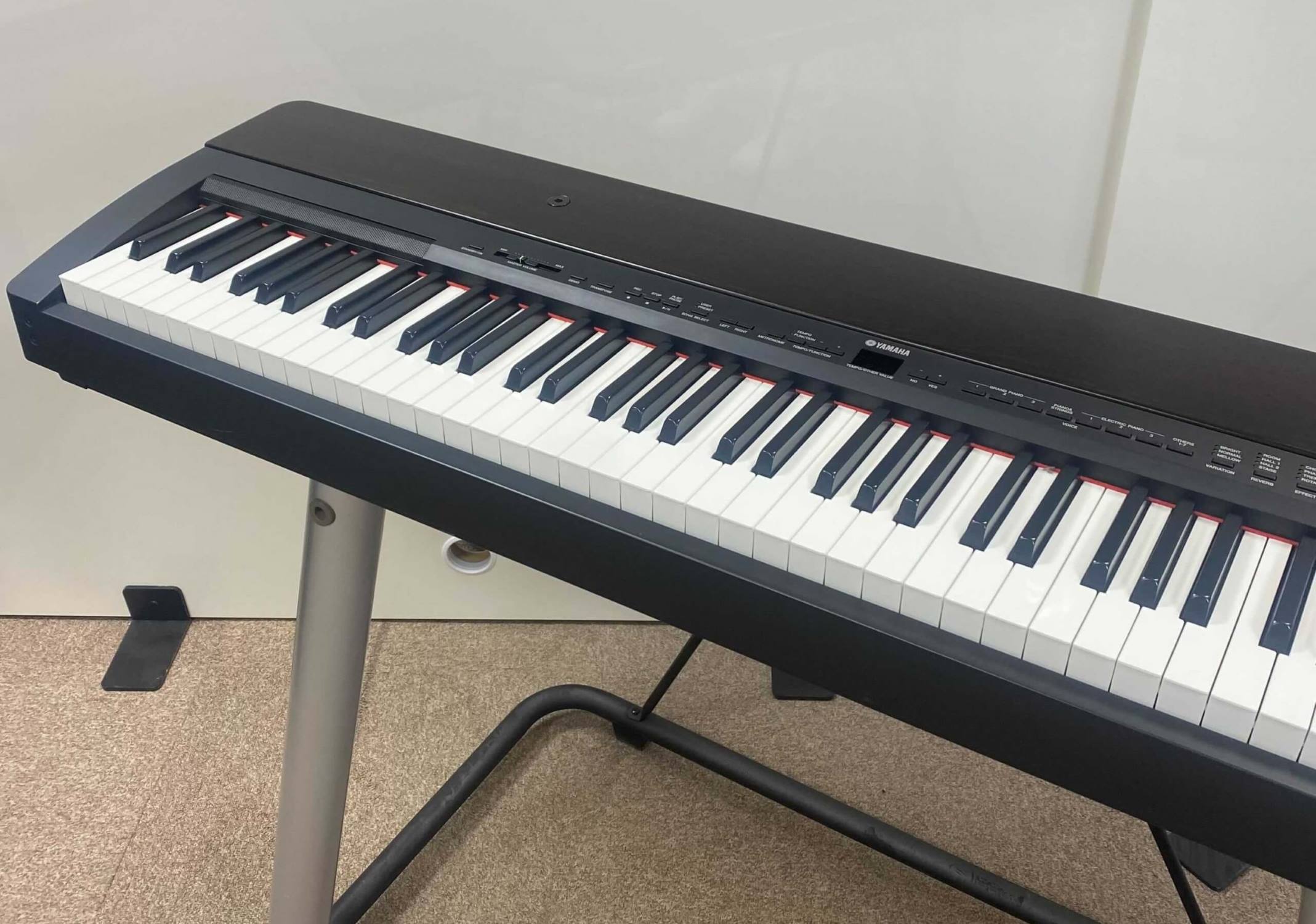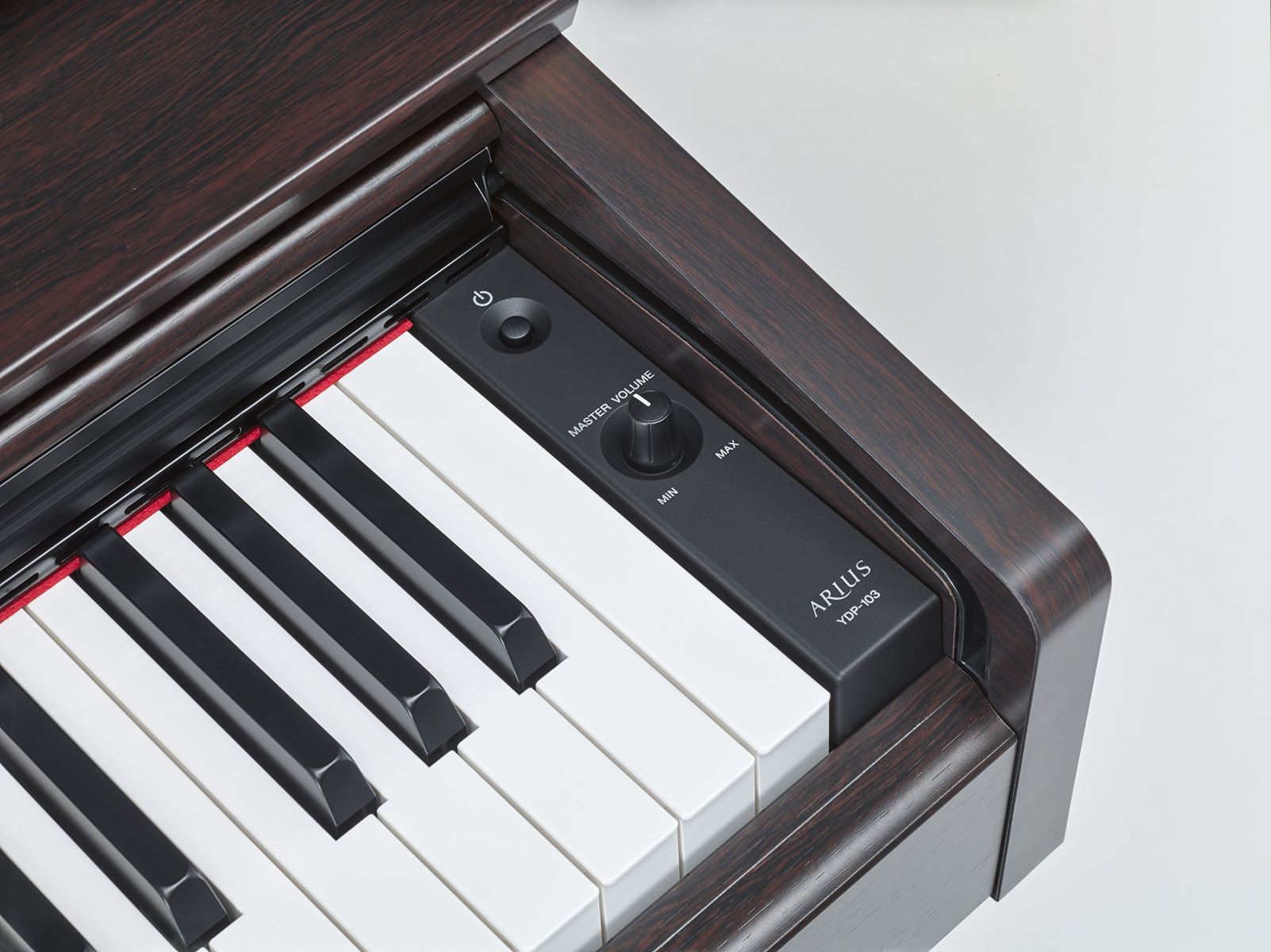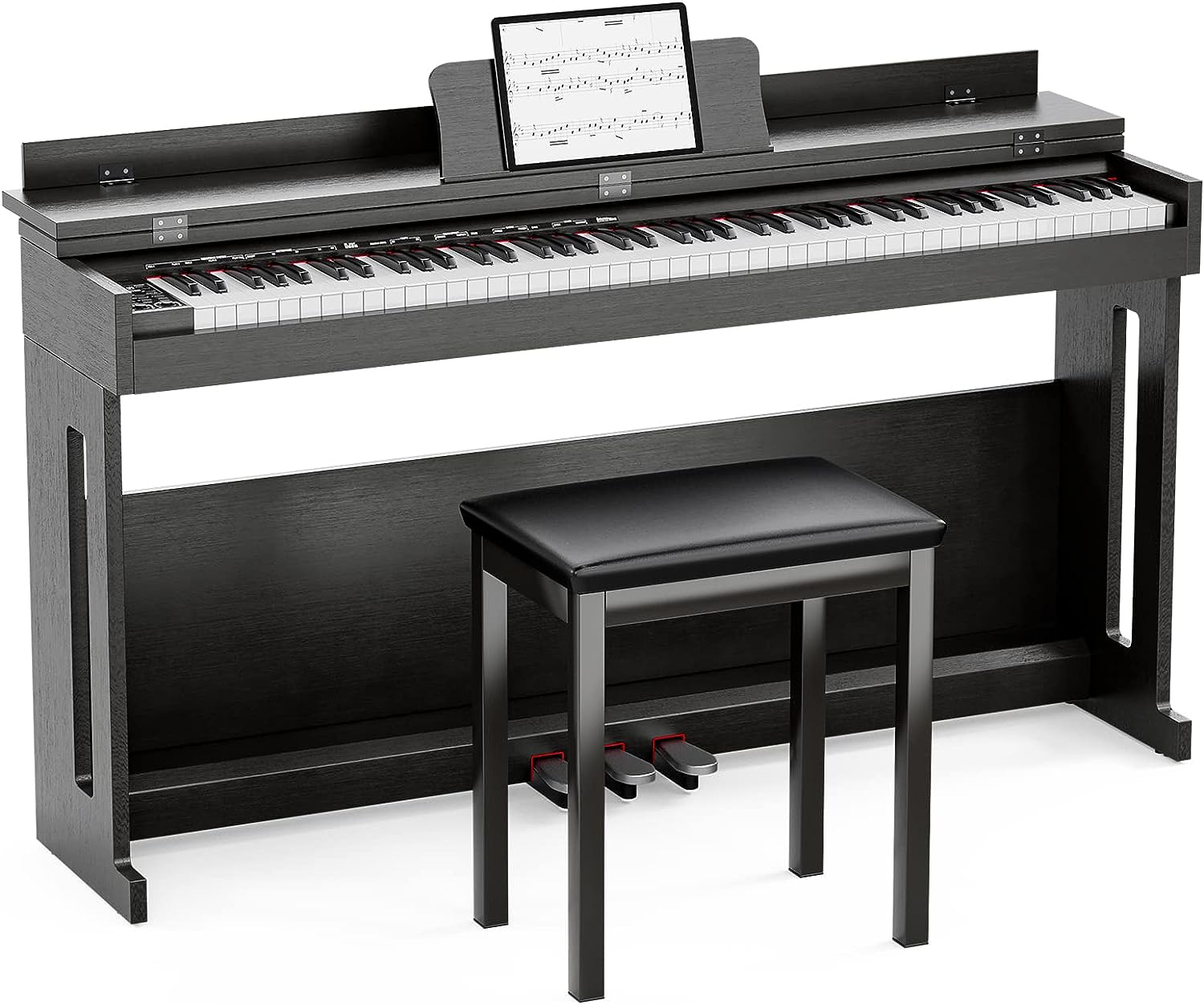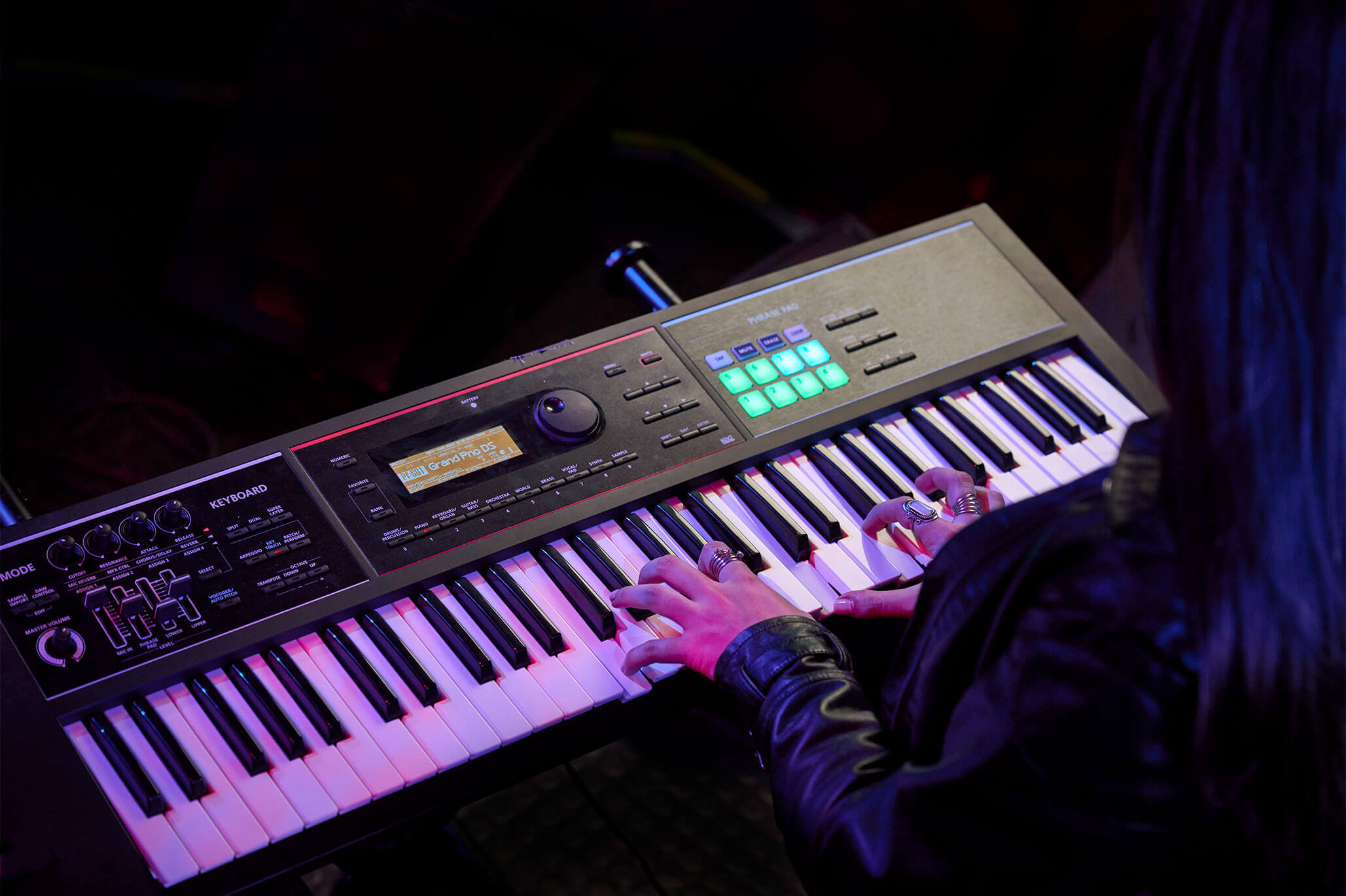Introduction
Welcome to the world of digital music recording with the Yamaha Digital Piano P-105! Whether you're a seasoned pianist or just beginning your musical journey, this versatile instrument offers a myriad of features that allow you to capture and share your musical creations with the world. In this guide, we'll walk you through the process of digitally recording your performances on the Yamaha P-105, from setting up the instrument to selecting the right recording software and adjusting the necessary settings.
The Yamaha P-105 is renowned for its authentic piano sound and natural touch response, making it a popular choice among musicians seeking a high-quality digital piano. Its compact and portable design, coupled with advanced digital technology, makes it an ideal instrument for both stage performances and home recording sessions. With the ability to connect the P-105 to a computer, you can harness the power of digital recording to preserve your musical masterpieces and share them with friends, family, or a global audience.
Whether you're a classical pianist, a jazz enthusiast, or a contemporary music aficionado, the Yamaha P-105 offers a wide range of expressive sounds and dynamic performance capabilities. From delicate pianissimo passages to thunderous fortissimo chords, this digital piano faithfully reproduces the nuances of your playing, allowing you to convey your musical emotions with precision and clarity.
In the following sections, we'll delve into the essential steps for digitally recording your performances on the Yamaha P-105. You'll learn how to set up the instrument, connect it to your computer, select the right recording software, adjust the recording settings, capture your performance, and save/export your recordings for sharing or further editing. By following this guide, you'll unlock the full potential of the Yamaha P-105 as a powerful tool for capturing and preserving your musical creativity.
So, grab your headphones, prepare your favorite musical piece, and let's embark on a journey into the captivating world of digital music recording with the Yamaha Digital Piano P-105. Whether you're a solo performer, a collaborative artist, or a music enthusiast, this guide will equip you with the knowledge and skills to unleash your musical prowess and create stunning recordings that resonate with the soul. Let's dive in and explore the art of digital piano recording with the Yamaha P-105!
Setting Up the Yamaha Digital Piano P-105
Before embarking on your digital recording journey with the Yamaha P-105, it’s essential to ensure that the piano is properly set up for optimal performance and connectivity. The initial steps involve positioning the instrument in a suitable location and making the necessary physical connections to prepare it for digital recording.
First and foremost, select a well-lit and comfortable area for the Yamaha P-105, ensuring that the instrument is placed on a stable and level surface. The ergonomic design of the piano allows for easy access to the control panel and keyboard, promoting a seamless playing and recording experience. Once the piano is positioned to your satisfaction, ensure that it is powered on and ready for operation.
Next, it’s crucial to connect the Yamaha P-105 to a power source using the provided AC adapter. This ensures that the piano remains powered throughout your recording session, eliminating the risk of unexpected power loss. Additionally, the AC adapter enables the piano to deliver consistent performance and responsiveness, allowing you to focus on your musical expression without interruptions.
Furthermore, the Yamaha P-105 features a headphone output, enabling you to connect a pair of headphones for private practice and recording. This is particularly useful when you require a quiet environment for focused playing and recording, allowing you to immerse yourself in the music without disturbing others. Simply connect your headphones to the designated output jack on the piano, and you’re ready to experience the rich and authentic sound of the Yamaha P-105 in private.
Another crucial aspect of setting up the Yamaha P-105 for digital recording is ensuring that the instrument is positioned within reach of your computer or recording device. The piano offers convenient connectivity options, including USB and MIDI ports, allowing you to establish a seamless link between the instrument and your recording setup. By positioning the piano within close proximity to your computer, you can effortlessly transfer MIDI data and audio signals, facilitating a smooth recording process.
By following these essential steps, you can ensure that the Yamaha P-105 is optimally set up for digital recording, providing a solid foundation for capturing your musical performances with precision and clarity. With the instrument in position and the necessary connections established, you’re ready to delve into the captivating world of digital music recording with the Yamaha Digital Piano P-105.
Connecting the Digital Piano to a Computer
Connecting the Yamaha Digital Piano P-105 to a computer is a pivotal step in harnessing the full potential of the instrument for digital recording. The seamless integration between the piano and your computer enables you to capture the nuances of your performances with precision and clarity, paving the way for professional-quality recordings. By establishing a reliable connection, you can leverage the advanced digital capabilities of the piano to unleash your musical creativity and share your artistry with the world.
The Yamaha P-105 offers versatile connectivity options, including USB and MIDI ports, which serve as the primary conduits for linking the piano to your computer. The USB port allows for direct digital audio and MIDI communication between the piano and your computer, facilitating the transfer of audio signals and MIDI data in real time. This streamlined connection eliminates the need for complex audio interfaces or external MIDI devices, simplifying the recording process and ensuring low-latency performance.
To connect the Yamaha P-105 to your computer via USB, simply use a standard USB cable to establish a direct link between the piano and your computer’s USB port. Once the connection is established, the piano becomes an integral part of your digital recording setup, enabling you to transmit audio and MIDI data seamlessly between the instrument and your recording software. This direct USB connection harnesses the full potential of the Yamaha P-105 as a versatile MIDI controller and digital audio source, empowering you to capture expressive performances with unparalleled accuracy.
In addition to the USB connection, the Yamaha P-105 features MIDI ports that allow for traditional MIDI communication between the piano and external MIDI devices or computer interfaces. This flexibility enables you to integrate the piano into a broader MIDI setup, incorporating additional MIDI instruments or controllers to expand your creative possibilities. Whether you prefer the simplicity of USB connectivity or the versatility of traditional MIDI communication, the Yamaha P-105 offers a comprehensive range of options to suit your recording needs.
By establishing a robust connection between the Yamaha P-105 and your computer, you pave the way for seamless digital recording, enabling you to capture the full range of expressive nuances offered by the piano. This direct link unlocks the instrument’s potential as a powerful digital recording tool, allowing you to preserve your musical performances with uncompromising fidelity. With the piano seamlessly integrated into your recording setup, you’re poised to embark on a captivating journey of digital music creation and exploration.
Choosing the Right Recording Software
When it comes to digitally recording your performances on the Yamaha Digital Piano P-105, selecting the right recording software is a critical decision that significantly impacts the quality and flexibility of your recordings. The recording software serves as the digital canvas upon which you capture, edit, and refine your musical creations, offering a wide array of features and tools to enhance your recording experience. By choosing the appropriate recording software, you can unleash the full potential of the Yamaha P-105 and transform your musical visions into polished and professional-grade recordings.
One of the primary considerations when selecting recording software is compatibility with the Yamaha P-105 and your computer’s operating system. It’s essential to choose recording software that seamlessly integrates with the piano’s MIDI and audio capabilities, allowing for smooth communication and accurate capture of your performances. Look for recording software that supports MIDI input and audio recording, ensuring that you can harness the full range of the piano’s expressive capabilities during the recording process.
Furthermore, the recording software should offer intuitive and user-friendly interfaces, empowering you to navigate the recording environment with ease and efficiency. Look for software that provides comprehensive recording, editing, and mixing features, allowing you to fine-tune your recordings with precision and creativity. Additionally, the software should support multi-track recording, enabling you to capture individual parts of your performance separately and mix them together to create a cohesive and dynamic final recording.
Another crucial aspect to consider is the availability of virtual instruments and high-quality audio effects within the recording software. This allows you to enhance your piano recordings with additional instrumentation, effects, and sonic textures, expanding the creative possibilities and sonic palette of your recordings. Whether you seek to add orchestral accompaniment, ambient textures, or dynamic effects to your piano performances, the right recording software should offer a diverse array of virtual instruments and audio effects to complement your musical vision.
Moreover, the recording software should provide seamless integration with digital audio workstations (DAWs) and facilitate the export of recordings in standard audio formats, such as WAV or MP3. This ensures that your recordings are compatible with a wide range of playback devices and platforms, allowing you to share your musical creations with audiences worldwide. Additionally, the ability to export MIDI data from the recording software enables you to preserve the intricacies of your piano performances for further editing and arrangement in external music production environments.
By carefully considering these factors and exploring the features offered by various recording software options, you can make an informed decision when choosing the right recording software for your Yamaha P-105. The selected software should align with your recording goals, technical requirements, and creative aspirations, empowering you to unleash the full potential of the piano as a versatile and expressive recording instrument.
Adjusting Recording Settings
Before embarking on the actual recording process with your Yamaha Digital Piano P-105, it’s essential to fine-tune the recording settings to ensure that you capture your performances with precision and clarity. The recording settings encompass a range of parameters that directly influence the quality, dynamics, and fidelity of your recordings, allowing you to tailor the recording environment to suit your musical preferences and technical requirements.
One of the fundamental recording settings to consider is the input gain or volume level of the piano’s audio output. Adjusting the input gain ensures that the audio signal from the piano is captured at an optimal level, avoiding distortion or insufficient signal strength in the recordings. By carefully setting the input gain, you can achieve a balanced and robust audio signal that faithfully represents the nuances of your piano performances, laying the groundwork for high-quality recordings.
Additionally, it’s crucial to configure the recording software’s audio input settings to recognize the Yamaha P-105 as the primary audio source. This involves selecting the piano’s USB or MIDI connection as the input device within the recording software, enabling seamless communication between the piano and the recording environment. By specifying the piano as the designated input device, you establish a direct link that allows the recording software to accurately capture the audio signals and MIDI data transmitted by the piano.
Furthermore, consider adjusting the recording settings to accommodate the dynamic range and expression of your piano performances. This may involve configuring the software to capture a wide range of dynamics, from delicate pianissimo passages to powerful fortissimo chords, ensuring that the recordings faithfully reflect the nuances of your playing. Additionally, if the recording software offers features such as velocity sensitivity adjustment and pedal mapping, take advantage of these settings to tailor the recording environment to your playing style and artistic intentions.
Another crucial aspect of adjusting recording settings is configuring the software for multi-track recording, if applicable. This involves setting up individual tracks within the recording software to capture specific elements of your performance separately, such as melody, harmony, and rhythm. By organizing the recording environment into distinct tracks, you gain the flexibility to mix and edit each component of your performance independently, facilitating a comprehensive and polished final recording.
By carefully adjusting the recording settings of the Yamaha P-105 and the recording software, you can create an optimized recording environment that empowers you to capture your musical performances with exceptional fidelity and expressive depth. These settings serve as the foundation for translating your musical visions into captivating recordings, allowing you to harness the full potential of the piano as a versatile and dynamic recording instrument.
Recording Your Performance
With the Yamaha Digital Piano P-105 set up, connected to your computer, and the recording settings adjusted, you are now ready to embark on the exhilarating process of capturing your musical performances. The act of recording your performance on the Yamaha P-105 is a transformative and immersive experience, allowing you to preserve the nuances of your playing and share your musical artistry with audiences far and wide.
Before initiating the recording process, take a moment to prepare yourself mentally and emotionally for the performance. Whether you’re interpreting a beloved classical piece, improvising a jazz composition, or composing an original work, cultivating a focused and inspired mindset can significantly enhance the depth and authenticity of your performance. Embrace the unique expressive capabilities of the Yamaha P-105, allowing your musical intentions and emotions to flow seamlessly through your fingertips and into the keys.
Once you are mentally prepared, launch the selected recording software on your computer and ensure that the Yamaha P-105 is recognized as the primary input device for audio and MIDI data. Create a new recording project within the software, and set the parameters for the recording session, such as the desired audio quality, file format, and project tempo. These initial steps lay the groundwork for a structured and organized recording environment, setting the stage for a focused and productive recording session.
As you commence the recording, immerse yourself in the music, allowing the captivating sounds of the Yamaha P-105 to resonate with clarity and depth. Whether you’re performing a delicate arpeggio, a thunderous chord progression, or a lyrical melody, channel your musical expression and technical proficiency into the performance, infusing each note with intention and emotion. Leverage the dynamic touch response of the piano to convey a wide range of articulations and nuances, capturing the essence of your musical interpretation with precision and grace.
Throughout the recording session, maintain a sense of fluidity and continuity in your performance, allowing the musical phrases to unfold naturally and cohesively. Embrace the expressive potential of the piano’s responsive keyboard, modulating your touch and dynamics to convey the subtleties and contrasts inherent in the music. Whether you’re navigating intricate passages, crafting expressive phrasing, or exploring the full range of the instrument’s tonal palette, let your musical instincts and creativity guide the trajectory of the performance.
As the recording session unfolds, remain attuned to the musical narrative you’re weaving, infusing each passage with authenticity and conviction. Embrace the moments of spontaneity and inspiration, allowing your musical intuition to shape the contours of the performance. Whether you’re capturing a single take or compiling multiple recordings into a cohesive final piece, strive to convey a sense of musical storytelling and emotional resonance through your performance on the Yamaha P-105.
By immersing yourself in the process of recording your performance on the Yamaha P-105, you have the opportunity to preserve the ephemeral beauty of your musical expressions and share them with the world. Each recording session is a unique and enriching experience, allowing you to capture the essence of your musical voice and share it with audiences, fostering a deep and enduring connection through the universal language of music.
Saving and Exporting Your Recording
Once you have completed the captivating process of recording your performance on the Yamaha Digital Piano P-105, the next crucial step is to save and export your recording, ensuring that your musical masterpiece is preserved in a format that can be shared, distributed, and enjoyed by audiences worldwide. Saving and exporting your recording involves organizing and encapsulating your performance into a digital file, ready for playback, distribution, and potential further editing or enhancement.
Before saving your recording, take a moment to review and assess the captured performance within the recording software. Listen to the recording attentively, evaluating the fidelity, dynamics, and overall tonal balance to ensure that the essence of your performance has been faithfully captured. If necessary, make any minor adjustments or edits within the recording software to refine the recording and address any potential imperfections or inconsistencies.
After ensuring that the recording meets your artistic and technical standards, proceed to save the recording within the recording software’s project folder or designated location on your computer. When saving the recording, consider creating a descriptive and recognizable file name that reflects the musical content and context of the performance, facilitating easy identification and organization within your digital music library.
Additionally, it’s advisable to save the recording in a high-quality audio format, such as WAV or AIFF, to preserve the full fidelity and dynamic range of your performance. These uncompressed audio formats offer pristine sound quality and are ideal for archiving and sharing your recordings without compromising the integrity of the musical content. By saving your recording in a high-quality format, you ensure that the nuances and expressive nuances of your performance are faithfully preserved for future playback and distribution.
Furthermore, if you intend to share your recording with a wider audience or distribute it across digital platforms, consider exporting the recording in popular audio formats such as MP3 or AAC. These compressed audio formats offer efficient file sizes without significant loss of audio quality, making them suitable for online distribution, streaming, and playback across various devices and platforms. When exporting the recording, specify the desired audio format and encoding settings within the recording software to optimize the balance between file size and audio quality.
Once the recording is saved and exported in the desired audio formats, consider creating metadata for the recording, including the title, artist name, album information, and any additional descriptive details that enhance the context and presentation of the recording. This metadata enriches the recording with valuable information and facilitates organized cataloging and discovery within digital music libraries and playback devices.
By saving and exporting your recording with care and attention to detail, you ensure that your musical performances on the Yamaha P-105 are preserved and presented in a manner that aligns with your artistic vision and technical requirements. Each recording represents a unique and enduring musical expression, ready to resonate with audiences and evoke emotional connections through the timeless power of music.







